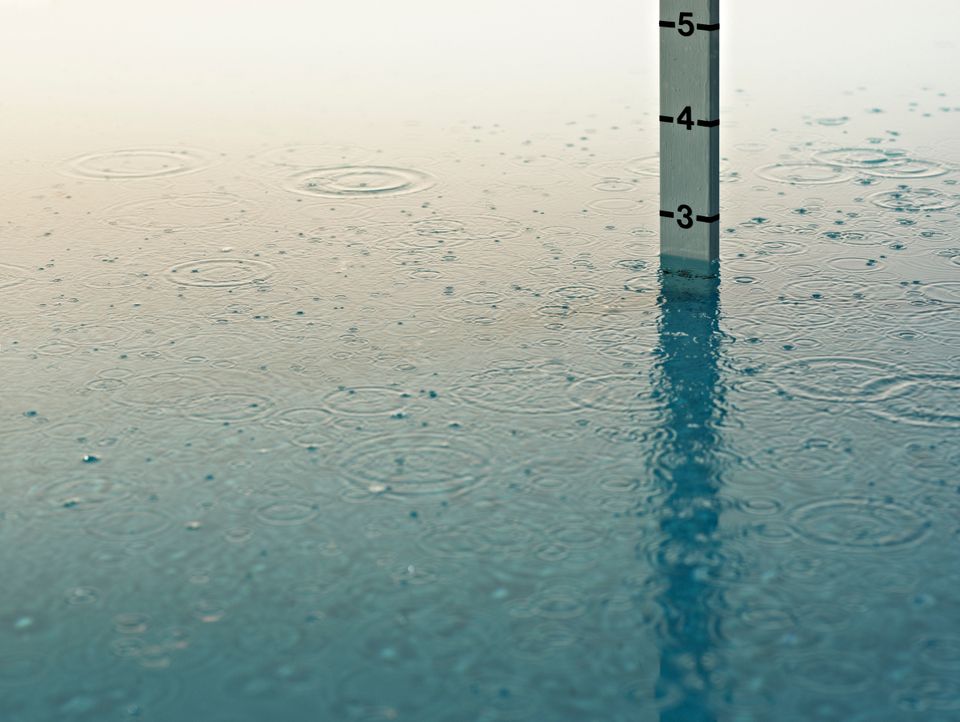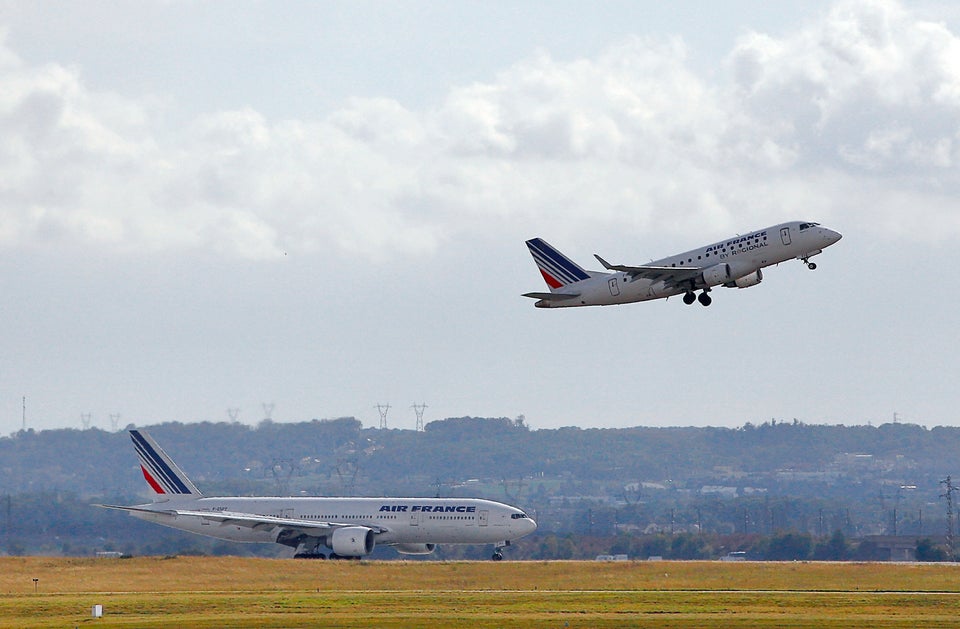Earth was hot in 2013. Really hot. So hot that according to the National Oceanic and Atmospheric Administration's latest global climate report from the National Climatic Data Center, 2013 was tied with 2003 for the fourth-warmest year since record-keeping began in 1880.
And high temperatures weren't the only weather story of the past year. The World Resources Institute, a non-partisan environmental research organization, has put together a detailed timeline of some of the most extreme weather events of 2013, using data from NOAA's most recent report and supplementing it with other outstanding phenomena.
"We've seen very low precipitation or very high precipitation depending on where you are in the world," Kelly Levin, a senior associate at WRI and a co-author of the timeline, told The Huffington Post. "And then across the board, we're seeing a significant number of record temperatures being broken -- all of which is certainly consistent with what models suggest will happen in changing climate."
Take a look at WRI's timeline, below:
Last year's high temperatures were only the latest in a long series. 2013 was the 37th consecutive year in which the average worldwide temperature was higher than 57 degrees Fahrenheit, which was the average global temperature for the 20th century. In other words, not since 1976 has Earth's average temperature been below that mark, according to NOAA's data.
So far, all the years of the 21st century, including 2013, have ranked among the 15 warmest on record. In addition, two of the three warmest years that have occurred on record -- 2010 and 2005 -- were in the 21st century, with 1998 being the other. Check out NOAA's full report for a detailed analysis.
The extreme weather timeline is "far from comprehensive," its authors write on the WRI blog, but it serves as "a reminder of the extreme events that have touched every community on the globe -- their citizens, ecosystems, and infrastructure."
"As we live in a world where we're seeing these events that are supposed to happen one in every 1,000 years or one in every 100 years happen much more often, are they truly considered extreme or is this the new normal we’re living in?" Levin told HuffPost. "Certainly the last few years suggest that we’re going to have to redefine what a normal climate looks like."
Levin added that the extreme weather events seen in 2013 were consistent with models of climate change, and that unless humanity can reduce its collective carbon footprint, more extreme weather is likely.
“Since extreme weather events and natural catastrophic loss events have been documented before 1980, there’s been a growing trend. In a warmer world, the consensus shows that certain events will become more frequent and intense," said WRI research analyst and timeline co-author Forbes Tompkins. "What was extreme today or was extreme in 1980 might become the new normal at some point.”
Here are 10 of the most extreme weather events from around the United States in 2013, according to WRI's timeline:
Epic Snowfall Buries The Northeast And Central U.S.
Joe Ledford/Kansas City Star/MCT via Getty Images
In February, states in the northeast United States saw massive snowfall and blizzard conditions. The largest snowfall from a single storm (31.9 inches) was recorded in Portland, Maine, while the sixth-largest snowstorm hit Boston. Hamden, Conn., witnessed 40 inches of snowfall from the same storm system.
Heavy winter storms hit the central United States in February also, affecting the Texas panhandle, western Oklahoma, and other areas. Wichita, Kan., saw record snowfall, receiving 21.2 inches of snow in February. (The previous record was 20.5 inches.) Amarillo, Texas, was covered in snow drifts, some greater than 10 feet in height. --
WRI Extreme Weather & Climate Events 2013Widespread Flooding In Central United States
Joe Shuman/Chicago Tribune/MCT via Getty Images
Widest Tornado Ever Observed In The U.S. Hits Oklahoma
AP Photo/Charlie Riedel
In May, a 2.6 mile-wide tornado struck near El Reno, Okla., the widest tornado ever observed in the U.S. Not two weeks before, a severe tornado had struck Moore, Okla., and destroyed thousands of homes and businesses, resulting in the deaths of more than 20 people. --
WRI Extreme Weather & Climate Events 2013Massive Wildfire Kills 19 Firefighters In Arizona
AP Photo/Matt York
While battling a raging wildfire in Prescott, Ariz., in July, 19 firefighters lost their lives. It was the single deadliest incident for firefighters in the U.S. since 9/11. A "19 Heros" patch was attached to a flagpole at the site where the firefighters died battling the wildfire. --
WRI Extreme Weather & Climate Events 2013Heavy Rains Along East Coast
Phil Ashley via Getty Images
In July, Florida saw rainfall almost 5 inches above average, causing the wettest July on record for the state. That same month, in Philadelphia, the rainiest day on record occurred when 8 inches of rain fell -- most of which came down in less than four hours. The city also experienced its wettest July on record last year. --
WRI Extreme Weather & Climate Events 2013Wettest Summer On Record In U.S. Northeast
Zoran Milich via Getty Images
A 1,000-Year Storm Floods Colorado
Photo DigitalGlobe via Getty Images
On Sept. 12, Boulder, Colo., received 9 inches of rain, breaking a record for the city and leading to widespread flooding. Rainfall for the month of September was three times the previous record set in 1940. --
WRI Extreme Weather & Climate Events 2013Severe Blizzard In Wyoming, South Dakota
AP Photo/KOTA-TV, Pool
In October, an early and severe blizzard swept through northeastern Wyoming and western South Dakota, causing the deaths of more than 20,000 cattle. October snowfall records were broken in Rapid City, S.D. --
WRI Extreme Weather & Climate Events 2013Texas Ice Storm Wreaks Havoc
Photo by Ronald Martinez/Getty Images
In December, an ice storm hit the Dallas-Fort Worth area, causing the cancellation of more than 1,000 flights and $1 billion in road damages and leaving more than 260,000 people without power. --
WRI Extreme Weather & Climate Events 2013California Experiences Driest Year On Record
By August, California had received only about 5 inches of precipitation, a record low for the state. By December, severe drought had affected more than one-quarter of the state. Only 7.38 inches of rain fell throughout the entire year, just 33 percent of the annual average. --
WRI Extreme Weather & Climate Events 2013Support HuffPost
Our 2024 Coverage Needs You
Your Loyalty Means The World To Us
At HuffPost, we believe that everyone needs high-quality journalism, but we understand that not everyone can afford to pay for expensive news subscriptions. That is why we are committed to providing deeply reported, carefully fact-checked news that is freely accessible to everyone.
Whether you come to HuffPost for updates on the 2024 presidential race, hard-hitting investigations into critical issues facing our country today, or trending stories that make you laugh, we appreciate you. The truth is, news costs money to produce, and we are proud that we have never put our stories behind an expensive paywall.
Would you join us to help keep our stories free for all? Your contribution of as little as $2 will go a long way.
Can't afford to donate? Support HuffPost by creating a free account and log in while you read.
As Americans head to the polls in 2024, the very future of our country is at stake. At HuffPost, we believe that a free press is critical to creating well-informed voters. That's why our journalism is free for everyone, even though other newsrooms retreat behind expensive paywalls.
Our journalists will continue to cover the twists and turns during this historic presidential election. With your help, we'll bring you hard-hitting investigations, well-researched analysis and timely takes you can't find elsewhere. Reporting in this current political climate is a responsibility we do not take lightly, and we thank you for your support.
Contribute as little as $2 to keep our news free for all.
Can't afford to donate? Support HuffPost by creating a free account and log in while you read.
Dear HuffPost Reader
Thank you for your past contribution to HuffPost. We are sincerely grateful for readers like you who help us ensure that we can keep our journalism free for everyone.
The stakes are high this year, and our 2024 coverage could use continued support. Would you consider becoming a regular HuffPost contributor?
Dear HuffPost Reader
Thank you for your past contribution to HuffPost. We are sincerely grateful for readers like you who help us ensure that we can keep our journalism free for everyone.
The stakes are high this year, and our 2024 coverage could use continued support. If circumstances have changed since you last contributed, we hope you’ll consider contributing to HuffPost once more.
Already contributed? Log in to hide these messages.










